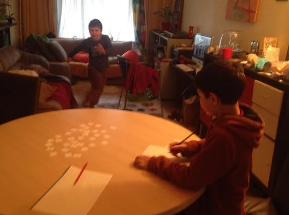Home education is often a great schooling option for neurodiverse pupils because it allows the learning environment to accommodate their needs.
From creating a ‘homeschool classroom’ that makes them feel at ease, to tailoring the curriculum to help them thrive, there are many ways to make learning more accessible to children who are learning at home. When it comes to actual home-ed ‘lessons’, making simple accommodations to the classroom rules can help neurodiverse homeschoolers focus better and relax more – both guaranteed to boost their learning ability.
Top tips to accommodate neurodiverse homeschoolers
1) Offer struggling readers the option to listen to textbooks instead of reading them
If the purpose is for them to learn specific information, does it really matter how they access that information? I’m a huge believer in the importance of reading from actual books but when the purpose is to learn, reading is not the right medium for every learner.
(Read more about using audiobooks in homeschool here.)
2) Allow learners to move!
For a lot of children, especially those with a neurodiversity like ADHD, one of the difficulties they face with traditional schooling is having to keep still and learn at the same time. At home you don’t need to enforce that rule. Practice mental maths while throwing balls to each other, check spellings while on a walk, allow them to balance on a beam while participating in a read-aloud lesson and let them watch video-led courses while running on a treadmill.
If your home learner is fidgeting in class and struggling to learn, encouraging them to move – actively as in the above examples, or passively via hand-held fidget tools – might make a significant difference to how easily they find it to learn and process information in class.
3) Split lessons to make each period of learning shorter
15 minutes of focused, engaged learning is worth 10x more than an hour of disengaged distraction
4) Allow typing as an alternative to writing the answers by hand, allowing learners to focus on the content of the work rather than the medium of expressing it
(Read more about How Typing Can Make Writing Easier.)
5) Teach handwriting as a skill-based lesson and don’t comment on it outside of these lessons (unless in a positive way!)
Students who struggle with neat handwriting can find it hard to concentrate on the content of a written task if they’re focused on the handwriting itself.
6) Allow headphones/background music to help learners focus in on a task
Muffling background noise/allowing the learner to choose their focus sounds reduces in-classroom stimulations.
Remember: Home education lets you make the rules…and that means you can also break them! If something isn’t working, change it. Rethink the timetable you’re using for the home-ed day, try a different textbook or approach to lessons, take a study week and explore what they’re interested in now, this week. Project-based, interest-led learning is an approach that often appeals to neurodiverse learners.
Try something new. It doesn’t have to look like school.
Ps. How the ‘classroom’ feels changes how learners engage with lessons. Read more about creating an environment for learning here.


